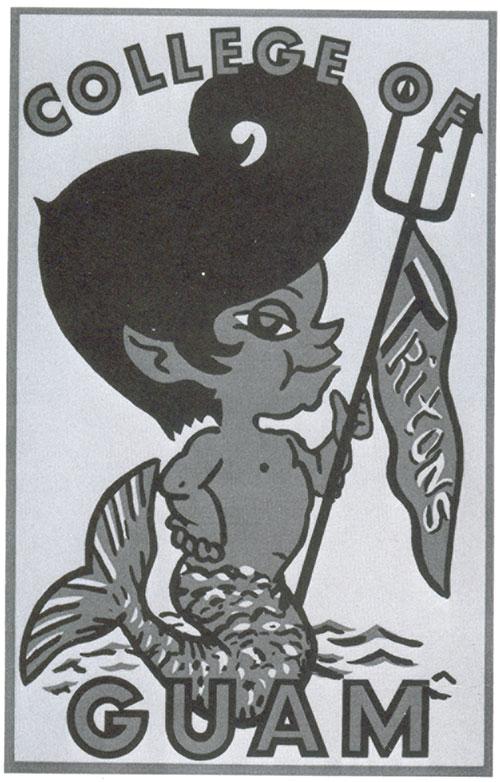The Triton Story
The Triton Story
The Triton Story

History of the University of Guam
The University of Guam dates back to June 1952, when the island government established the Territorial College of Guam as a two-year teacher-training school under the U.S. Department of Education. Guam was the first island in the Pacific, after Hawaii, to establish a post-secondary institution.
The Territorial College of Guam began classes under the guidance of Ohio State University with an initial enrollment of 123 full-time students, five faculty, and 13 staff members. The first degrees, associate degrees in elementary education, were awarded in 1953.
Groundbreaking for a new 40-acre campus in Mangilao took place in July 1958, and on July 1, 1960, the Territorial College opened for classes in a two-story classroom building. This was the beginning of Mangilao becoming the educational center for Micronesia.
The Territorial College met the requirements to secure its first accreditation as a junior college by the Western College Association in 1959. In 1961, Public Law 6-40 officially changed the name to the College of Guam and authorized the establishment of four-year degrees. The first bachelor's degrees were awarded in business administration in 1962.
In 1963, the College became autonomous from the Department of Education and gained a five-member Board of Regents. The College was accredited as a senior college by the Western Association of Schools and Colleges (WASC) in 1963 and 1965. The institution adopted the “Tritons” as the mascot in 1963.
In 1968, the institution became the University of Guam via Public Law 9-233, and the first three graduate degrees, in education, were awarded.
The University acquired land grant status in 1972 through U.S. P.L. 92-318, receiving a $3 million grant providing for research, extension and outreach services, and educational opportunities for citizens in the community. It gave the University access to research and education funds in an extensive network of over 100 institutions. The grant is now managed by the Board of Regents and has grown significantly.
Administrative autonomy was granted on Oct. 4, 1976, with the enactment of “The Higher Education Act of 1976,” which established the University as a nonprofit corporation under a seven-member Board of Regents. In 1984, P.L. 17-55 granted increased autonomy and established a nine-member BOR. This law was in turn amended in 1988 using the term “Charter.” Now, Title 17 of the Guam Code Annotated includes Chapter 16, the Charter of the University of Guam.
The University received eight years of accreditation in 2009 — its longest accreditation time period in its history. In 2016, the University received another eight years of accreditation.
Over the years, the growth of the academic programs has been determined by the changing needs of the island. In recent years has there been a conscious effort to grow and expand programs within the parameters of an institutional effort.
The University began as a teacher training institution but today offers 25 undergraduate programs and 15 graduate programs and provides world-class research and service activities for a unique island region.
UOG Chooses the "Tritons"
Lacking the college tradition of having an appropriate “nickname,” and faced with
the dilemma of sending a basketball team into the Navy League with little more to
call them other than “COGS,” a faculty-student committee organized a name selecting
election.This committee eventually chose six names for consideration and ballots were
placed in the Student Center. The popular choice was TRITONS, and from this our own
college tradition was born.
A fine decal showing our little TRITON became a common car window dressing, thanks to the creative talent of co-ed, Bonnie Kinloch.
At last the College of Guam started to look collegiate!
Excerpt from the 1963 Edition of the UOG Coral Yearbook.
